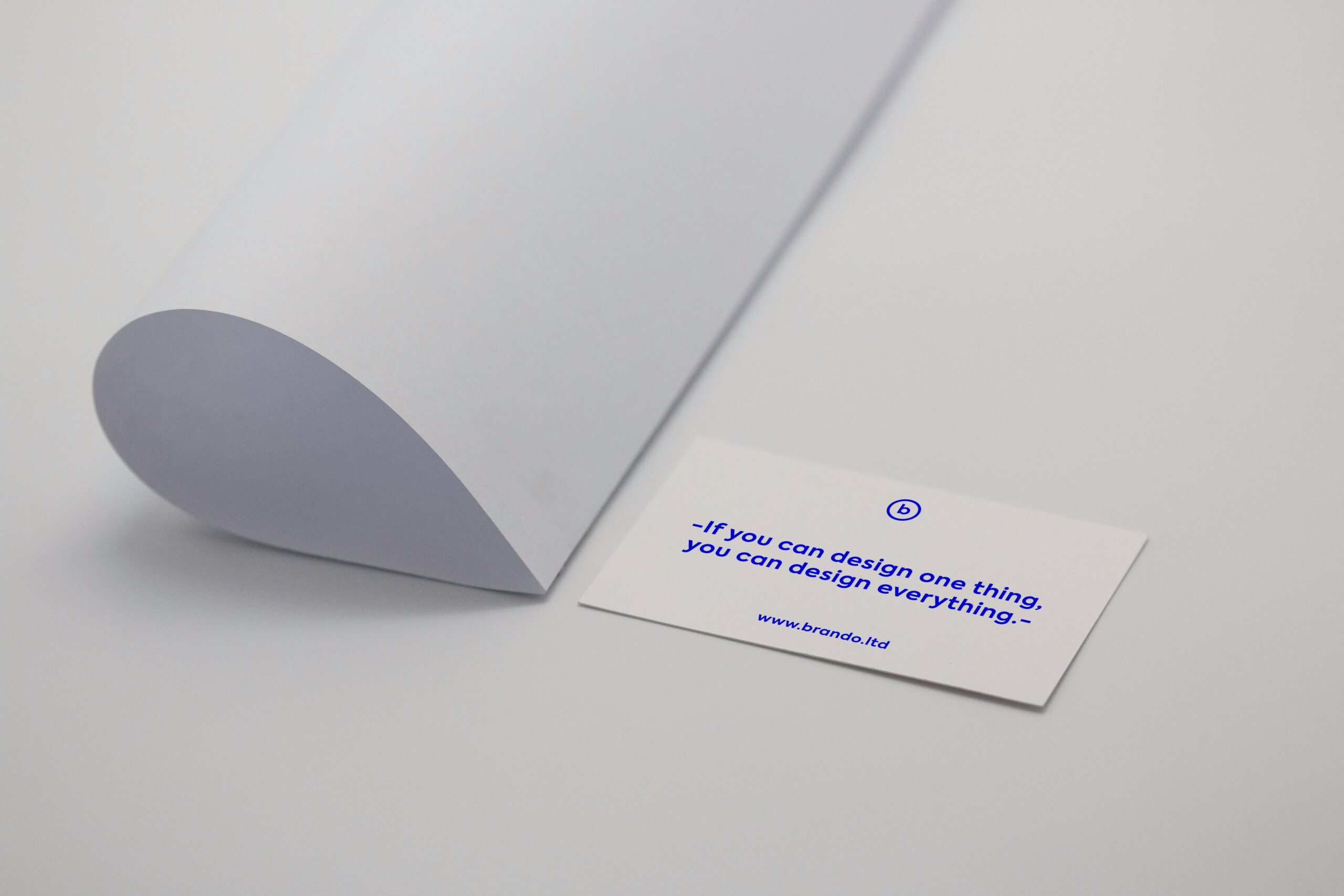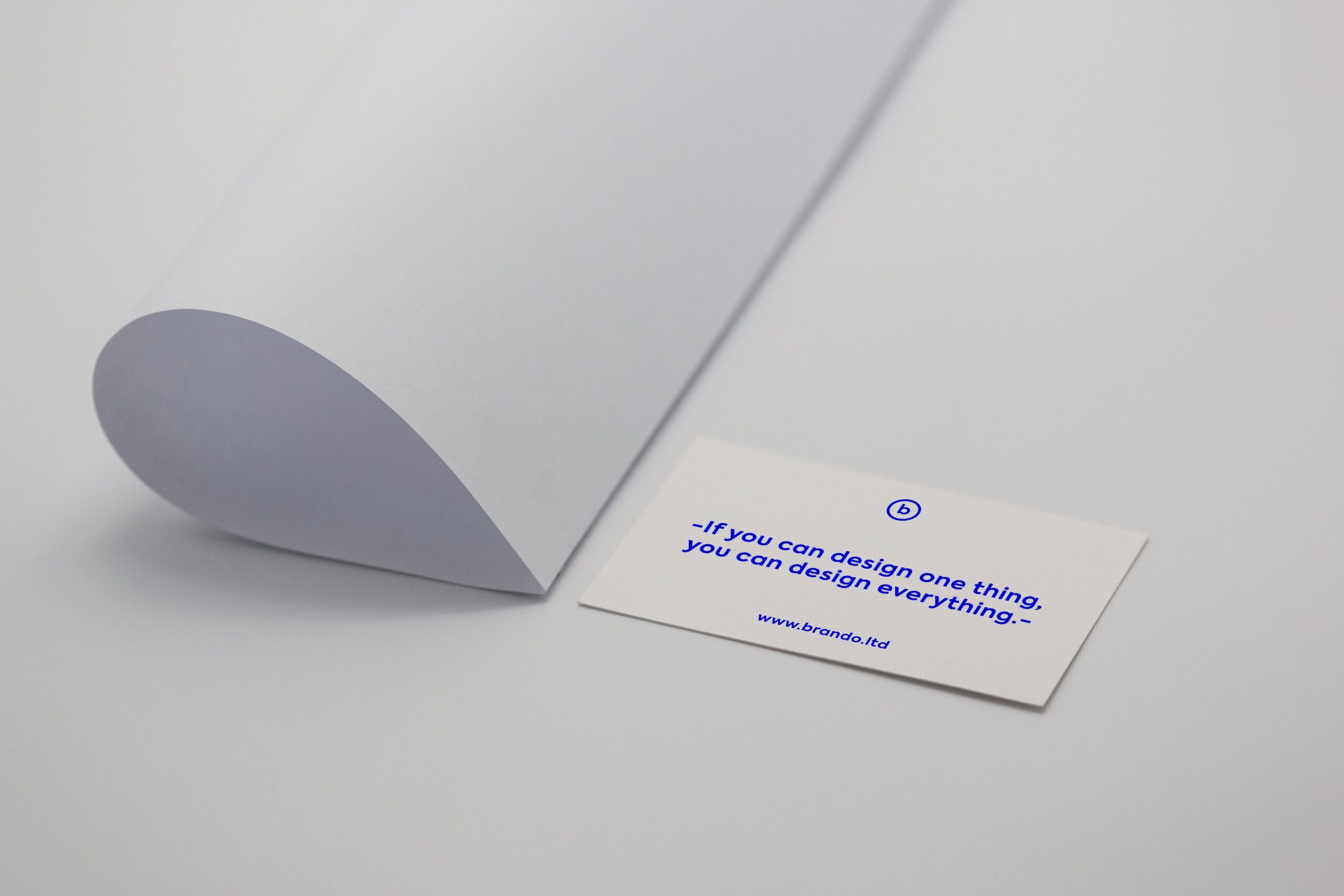

First Impressions Count: The Role of Business Cards
In the professional world, the adage “you never get a second chance to make a first impression” holds significant weight, particularly when it comes to business interactions. A business or visiting card plays a crucial role in establishing that initial connection with potential clients, partners, and colleagues. Its importance cannot be overstated, as it is often the first tangible representation of you and your brand that others will encounter.
The psychological impact of first impressions is profound. Studies suggest that people form judgments about others within seconds of meeting them. A well-crafted business card can enhance this judgment positively, conveying professionalism, credibility, and attention to detail. Conversely, an unattractive or poorly designed card can lead to negative assumptions about one’s capabilities and reliability. Thus, the design and quality of materials used in your business cards are not merely aesthetic choices; they directly affect the perception of your brand.
Visual design is paramount in creating an immediate impact. Elements such as color, typography, and layout all play a role in how a business card is perceived. A card that is visually appealing can engage the recipient and encourage them to remember you favorably. Moreover, the quality of the card itself—whether it is sturdy, glossy, or matte—contributes to the physical impression you leave. A substantial, high-quality business card can suggest strength and reliability, while a flimsy card may imply the opposite.
Furthermore, the information presented on the card should be clear and concise. Essential details such as your name, title, company, and contact information must be easy to find and read. This accessibility ensures that the recipient retains the information without hassle, which is crucial in a competitive market. In conclusion, a well-designed business card not only reflects your personal brand but also significantly contributes to the initial impressions that pave the way for future business opportunities.
Networking and Relationship Building: The Power of Connection
In today’s digital age, the relevance of business cards remains immense, especially in networking situations. The practice of exchanging business cards, or visiting cards, functions as a tactile representation of a professional persona. These cards are not merely pieces of paper; they serve as effective tools that facilitate introductions and initiate conversations. The act of handing over a business card can often lay the groundwork for mutual interests and provide a seamless segue into relationship building.
During networking events, the exchange of business cards can becomes an icebreaker, allowing individuals to transition from formal introductions to more in-depth discussions. When one receives a business card, it creates a sense of familiarity and trust that may otherwise take several interactions to establish. Moreover, business cards enable contacts to recall conversations and relate them to specific individuals, enhancing the likelihood of follow-up communication. Following a networking event, a simple act of reaching out with a personalized message referencing the conversation can significantly strengthen new relationships.
To maximize the effectiveness of business cards during networking events, it is essential to adopt certain best practices. First, ensure that your card reflects professionalism and contains clear information—such as your name, position, and contact details. Keep your design simple yet memorable, making it easy for others to identify and retain. When handing out your card, offer it with both hands or with one hand while ensuring it is presented face-up, emphasizing respect and consideration. Additionally, actively engage during the exchange; asking questions or sharing a relevant anecdote can help make the interaction more meaningful.
In conclusion, business cards wield significant power in networking and relationship building. They serve as effective conversation starters and vital connectors in both personal and professional domains. Embracing their significance can enhance your networking endeavors and foster long-lasting professional relationships.
Design Essentials: What Makes a Business Card Stand Out
A well-designed business card serves as a potent tool for professionals to communicate their brand identity and make a lasting impression. Several key design components contribute to the effectiveness and memorability of a visiting card. The selection of font plays a paramount role in conveying professionalism and readability. Fonts should be chosen not only for aesthetic appeal but also for legibility; straightforward, clean fonts tend to perform better in catching the eye of potential clients or partners. Overly decorative or complex fonts can hinder readability, diminishing the card’s impact.
Color schemes also play a critical role in business card design. Colors evoke emotions and establish brand recognition, making it crucial to select hues that align with the overall brand identity. For instance, blue may convey trust and reliability, while red can symbolize energy and passion. A well-chosen color palette that reflects the brand’s essence can significantly enhance the card’s effectiveness, making it easier for recipients to recall the associated brand in the future.
Moreover, logo placement is another essential aspect to consider. The logo should be prominent but not overpowering, striking a balance between visibility and overall aesthetic appeal. Well-placed logos help to reinforce brand identity, ensuring that the business card is instantly recognizable. Alongside visual elements, including essential contact information is vital. This includes the individual’s name, job title, phone number, email address, and website. Clear and concise communication of contact details is necessary for generating follow-up conversations.
Ultimately, aligning the visiting card’s design with the overarching brand identity enhances not only visual appeal but also memorability. By thoughtfully considering font choices, color schemes, logo placement, and essential information, professionals can create business cards that stand out in a competitive landscape.
Beyond the Traditional: Modern Innovations in Business Cards
In the ever-evolving landscape of networking and communication, business cards have transcended their traditional paper format to embrace innovative modern designs. Among these advancements, digital business cards are gaining popularity for their convenience and adaptability. They come as a response to today’s fast-paced technology-driven environment, allowing individuals to share their contact information seamlessly via smartphones or other devices. Unlike traditional cards, digital cards can be easily updated, ensuring that contact details are current without the need to print new cards.
Another notable trend is the introduction of NFC-enabled business cards. These cards are equipped with near-field communication technology, allowing users to share their professional information simply by tapping their card against a compatible device. This innovative approach not only enhances the user experience but also aligns well with the trend of minimalism, stripping down the need for a physical exchange of details while maintaining effective networking capabilities.
Moreover, sustainability has become a pivotal focus in the production of visiting cards, with an increasing number of professionals turning to eco-friendly materials. Cards made from recycled paper or sustainable sources appeal to environmentally conscious consumers and reflect a brand’s commitment to responsible business practices. However, while these modern innovations offer a range of advantages, it is essential to consider their limitations as well. For instance, digital and NFC-enabled cards may not be suitable in all networking situations, especially where technology availability is limited, or when meeting individuals who may prefer traditional formats.
Ultimately, the choice between traditional business cards and modern innovations hinges on various factors, including the nature of one’s profession, the target audience, and the context of the interaction. As we navigate through this digital age, understanding the strengths and weaknesses of each format can significantly enhance the effectiveness of one’s networking efforts.

